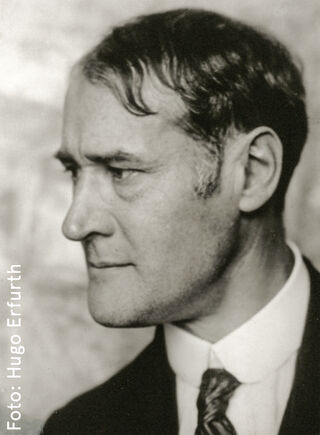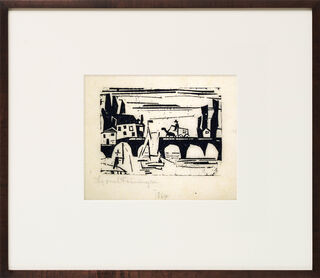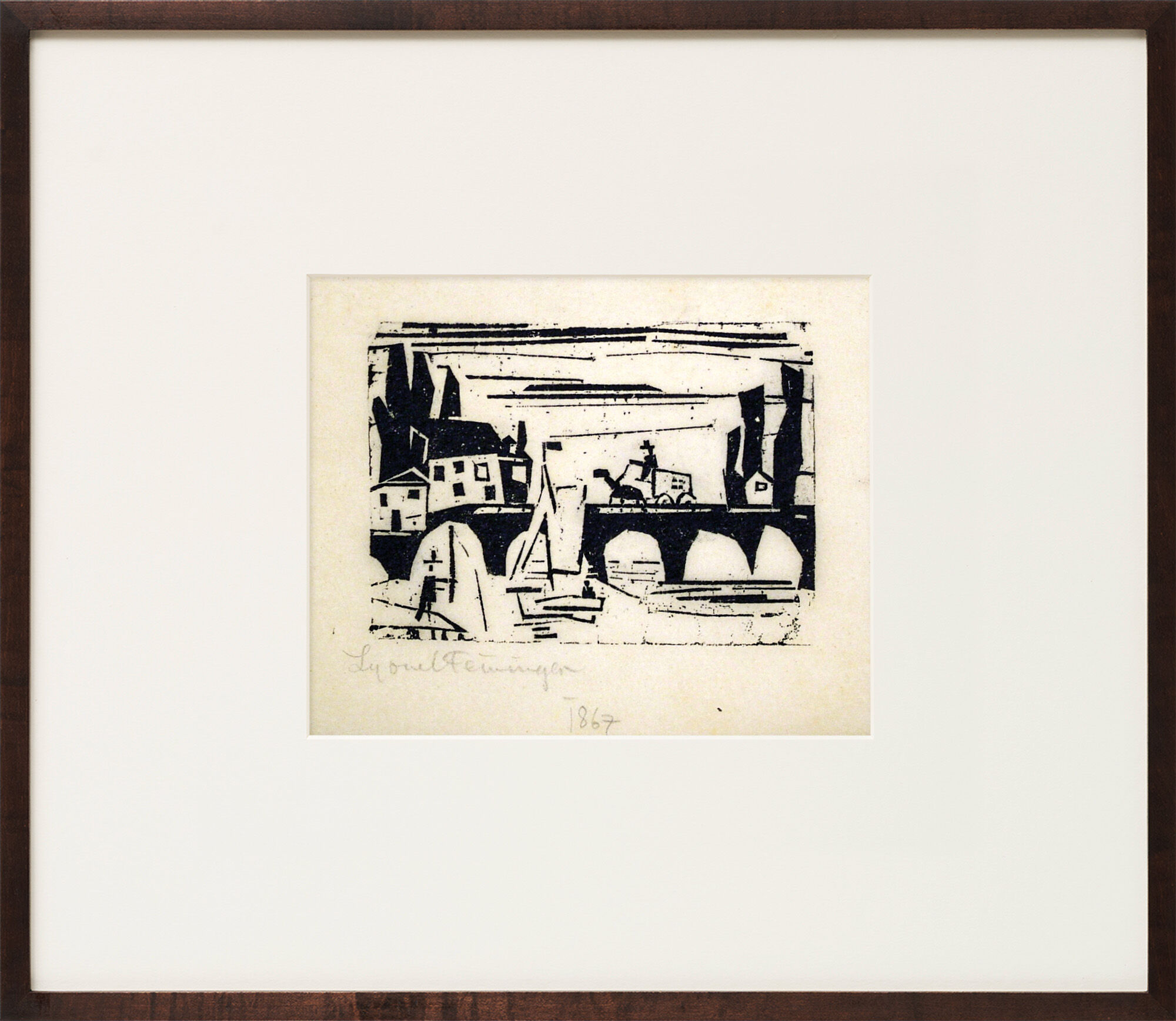Picture "Wagon Crossing a Bridge" (c. 1941)


Picture "Wagon Crossing a Bridge" (c. 1941)
Quick info
limited | signed | inscribed | woodcut | framed | size 29 x 30 cm
Detailed description
Picture "Wagon Crossing a Bridge" (c. 1941)
Lyonel Feininger produced his first woodcuts in 1918. With the woodcut printing technique, Feininger placed himself in the great tradition of German woodcut artists from the 15th and 16th centuries. He modernised this printing method, which is all the more remarkable since Feinimself this elaborate process.
"I found the greatest joy in this technique, and I simply left everything else for it," wrote Feininger in a letter to Alfred Kubin. In addition to churches, villages, and cityscapes, Feininger, who had a lifelong fascination with the sea, primarily focused on maritime themes such as sailing ships, ports, and coastal scenes.
Woodcut, c. 1941. Signed and inscribed with the artist's factory number (1867). Catalogue raisonné Prasser W 82. Motif size 8.9 x 12.1 cm. Sheet size 12.4 x 17.5 cm. Size in frame 29 x 30 cm as shown.

About Lyonel Feininger
1871-1956
Lyonel Feininger is known for his depictions of streets, cities and ships, which are composed of prismatically broken forms and inspired by Cubism and the art of Robert Delaunay.
The painter and graphic artist was born in New York in 1871 as the son of German musicians. He first came to Germany at the age of 16 for a concert tour of his parents and stayed there to study at the Hamburg School of Applied Arts and later at the Royal Prussian Academy in Berlin. After a study visit to Paris, he continued living and working for many years in Germany, where he was close to the "Blauer Reiter" artists' group. Starting in 1919, he made his mark as a master for the graphic workshops of "Bauhaus" in Weimar, Dessau and Berlin.
Feininger, along with Schlemmer, most explicitly realised the Bauhaus ideal of order. For him, the starting point is not the human figure but architecture, the strict geometric structure of forms that he observed in Gothic churches. His studies of the architecture of small German towns established his light-flooded, prismatic style, which was to become a model for many artists.
Feininger first devoted himself to German townscapes and churches. During the National Socialist era, the Nazi Party officially declared Feininger’s work to be "degenerate", which forced him to return to New York in 1937. There he created his famous impressions of the architecture of Manhattan and New York.
The field of graphic arts, that includes artistic representations, which are reproduced by various printing techniques.
Printmaking techniques include woodcuts, copperplate engraving, etching, lithography, serigraphy.
Depiction of typical scenes from daily life in painting, whereby a distinction can be made between peasant, bourgeois and courtly genres.
The genre reached its peak and immense popularity in Dutch paintings of the 17th century. In the 18th century, especially in France, the courtly-galant painting became prominent while in Germany the bourgeois character was emphasised.


